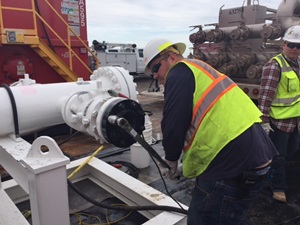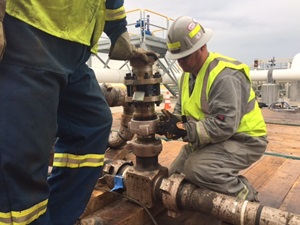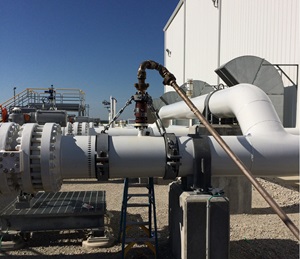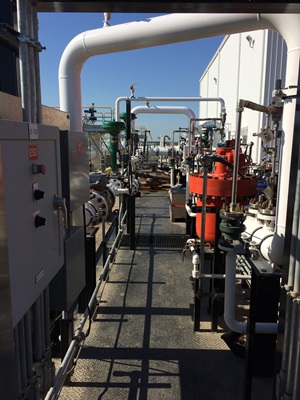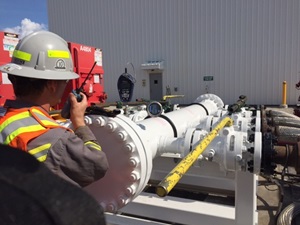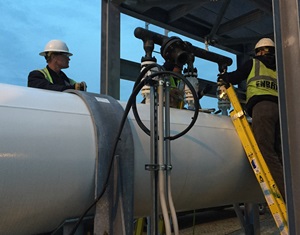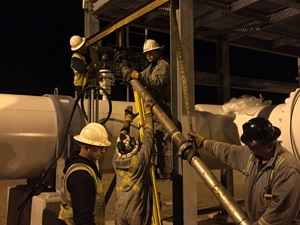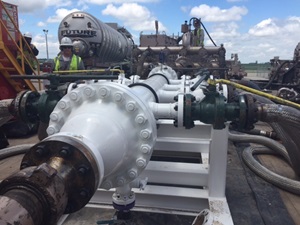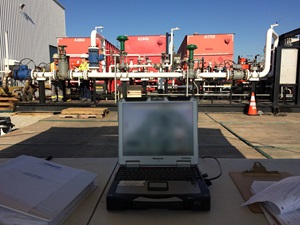A ‘hands-on’ leak detection method: Data, Detection and Diligence (Part 1)
Scheduled fluid withdrawals test sensitivity of computerized pipeline leak detection systems
It’s as close as possible to the real thing.
In this case, however, no one wants the real thing. And that’s why Enbridge commits to regularly scheduled fluid withdrawals—the most “hands-on” method of testing the pipeline leak detection systems—along our crude oil network.
“In the interest of pipeline safety, Enbridge takes an overlapping and layered approach to both pipeline leak prevention and pipeline leak detection. The group I work with is an innovative team dedicated to identifying leaks as quickly as possible,” says Cam Meyn, a supervisor of leak detection testing and research with Enbridge.
“A leak is something you hope you never see, and generating data for our computerized leak detection systems can be difficult,” notes Camille Downs-Lanctot, who manages Enbridge’s fluid withdrawal program. “One way of doing that is to actually get out there in the field and physically withdraw product from the pipeline.
“It is easily the most accurate method of testing our systems, and seeing how these systems are going to react,” adds Downs-Lanctot. “Other pipeline companies have fluid withdrawal programs, but we feel that they’re not as comprehensive or as developed as ours.”
Safety is the very foundation of our business at Enbridge, and our multi-pronged approach to pipeline safety includes prevention methods such as:
- Rigorous design and construction standards;
- 24/7/365, system-wide monitoring;
- An ultra-high-tech inspection program that regularly examines our pipes, inside and out;
- Remotely controlled isolation valves; and
- Robust pipeline maintenance, including cathodic protection and interior cleaning of pipes.
Leak detection systems add another layer of safety, and these skid-based fluid withdrawals held one to two times a year—including a large-scale event near Decatur, Illinois, in June 2017 along our Southern Access Extension (SAX) pipeline—assure us that they’re working as designed.
Image gallery: Enbridge's Fluid Withdrawal Test (FWT) program
Fluid withdrawal tests can be announced in advance to our operations staff at Enbridge’s control center, or be planned as unannounced events (otherwise known as “side streaming”) to prove both the effectiveness of the systems and the processes followed by personnel when our systems go into alarm.
The process typically involves:
- installing a metering skid and several large storage tanks onsite;
- connecting the skid to one of our pipelines;
- conducting controlled withdrawals, at specific rates and operating conditions, to test the sensitivity of our computerized leak detection systems; and
- reinjecting the oil back into the pipeline following tests.
“We test under different kinds of operating conditions—during startup, shutdown, shut-in, and while operational at various flow rates,” says Downs-Lanctot.
Over the past five years, Enbridge’s Leak Detection team has conducted a total of 75 fluid withdrawal tests—either skid-based or side streaming activities—at 21 locations across our North American pipeline network.
Enbridge is also committed to harnessing innovation and technology in the name of safety. In future chapters of this Data, Diligence and Detection series on leak detection, we’ll examine Enbridge’s other leak detection activities, including the practice of side streaming, the use of overlapping computerized models, and hydraulic pipeline simulation systems.
“By supporting the leak detection program, on top of multiple prevention activities, Enbridge is showing it’s committed to pipeline safety—and committed to doing it right,” says Meyn.




